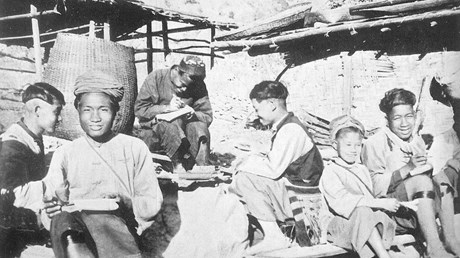Bible translation and writing was an important part of James O. Fraser’s missionary work in the Nujiang mountains 100 years ago.

In the remote mountains and ancient forests of China’s Nujiang Grand Canyon, near the Myanmar and Tibet borders in Yunnan province, live the Lisu people (傈僳族).
One of the country’s 55 ethnic minorities, the community of about 900,000 is majority (80%) Christian, and the faith has been present among the people for over a century.
The history of the sowing, germination, flowering, and fruiting of the gospel among the Lisu and the development of their written language trace back to the 1910s, with a missionary from England named James Outram Fraser.
Love at first sight
In 1908 at the age of 22, Fraser (Chinese name Fu Neng Ren 富能仁) was a talented student who gave up the promising future of an engineering career to join Hudson Taylor’s China Inland Mission (CIM). His move across the world was inspired by the Student Volunteer Movement as well as by a mission mobilization leaflet one of his Imperial College London schoolmates gave him, which included the following sentences:
If our Master returned today to find millions of people (in China) unevangelized, and looked, as of course He would look, to us for an explanation, I cannot imagine what explanation we should have to give. Of one thing I am certain—that most of the excuses we are accustomed to making with such good conscience now, we shall be wholly ashamed of then.
Convicted and compelled by this argument, Fraser boarded a ship to China in 1910 and disembarked in Tengchong (formerly Tengyueh, a city in Yunnan province and a key stop along the Silk Road).
A hundred years ago, the local ethnic minority Lisu were extremely poor, and their living conditions were miserable. The agricultural method then was “slash and burn.” People lived in raised ...
from Christianity Today Magazine
Umn ministry


.gif)

.gif)
.gif)
